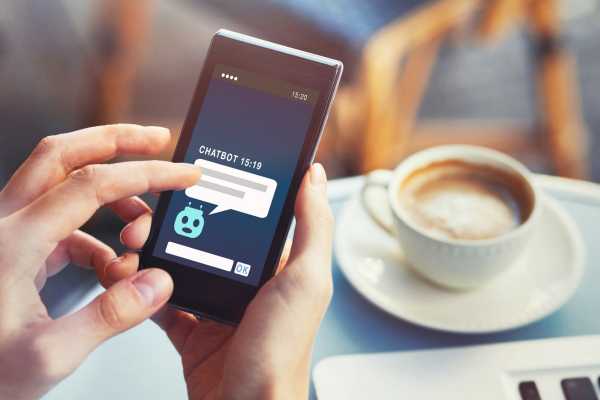WhatsApp is one of the most popular and widely used communication tools in the world, with millions of active users daily.
For businesses, the app has become an essential channel for customer service, and many companies have adopted bots to automate this process, ensuring fast and efficient service without overloading their teams.
In this article, we will explore how you can create a bot on WhatsApp to automate your customer service, highlighting best practices, available tools, and how Nexloo’s solution stands out in this scenario.
If you want to increase the efficiency of your customer service and reduce operational costs, keep reading to understand how this technology can be applied to your business.
What is a Bot on WhatsApp?
A bot on WhatsApp is an automated tool that uses artificial intelligence (AI) and machine learning to respond and interact with customers without human intervention.
These bots can be programmed to answer frequently asked questions, direct customers to the appropriate department, schedule appointments, send confirmations, and even process sales.
By using a bot, your company can provide customer service 24/7 without requiring constant human intervention.
Additionally, automation significantly reduces response time and workload, allowing employees to focus on more complex issues.
Advantages of Using a Bot on WhatsApp
24/7 Customer Service
The main advantage of using bots is the ability to offer continuous service. Customers can reach out at any time of the day or night, and the bot will always be available to respond, resolve questions, or direct them to a live agent if necessary.
Efficiency and Speed
Bots can respond instantly, significantly reducing customer wait time. Additionally, they can handle multiple customers simultaneously, increasing overall efficiency.
Cost Reduction
By automating part of the customer service process, companies can reduce operational costs, as there is no need to maintain a large team to handle simple and repetitive inquiries.
Improved Customer Experience
Automation enhances the customer experience by making interactions faster and more efficient. Instant responses, accurate information, and automatic notifications contribute to a smoother customer journey.
How to Create a Bot on WhatsApp
Now that you understand the advantages of using a bot on WhatsApp, it’s time to learn how to create one. While there are several ways to do this, we will outline the main steps to help you build an efficient and effective bot.
1. Choose a Platform to Create the Bot
There are several platforms available for creating WhatsApp bots. Some require little technical knowledge, while others offer more customization options but demand programming skills. Here are some popular choices:
- Twilio API for WhatsApp: Twilio is a well-known platform with APIs that allow messaging across multiple communication channels, including WhatsApp. It offers a robust and well-documented service, ideal for companies with a technical team capable of customizing the bot.
- ManyChat: ManyChat is a bot creation platform focused on WhatsApp and other social networks. With a user-friendly interface, it is an excellent option for those who want to create bots without advanced programming skills.
- Nexloo: Nexloo provides a complete solution for automating WhatsApp customer service. With an intuitive interface and integrations with various CRM and ERP tools, Nexloo stands out for its ease of use and proven results.
2. Define the Bot’s Objectives
Before setting up your bot, it’s crucial to define its objectives. Will the bot only answer frequently asked questions? Or will it handle appointments, send reminders, and even process financial transactions? Clearly defined objectives will help you choose the right tools and program interactions effectively.
Common functions for WhatsApp bots include:
- Automatic responses to frequently asked questions (FAQ).
- Scheduling and confirmation of services.
- Collecting contact information.
- Sending updates and notifications.
3. Program the Conversation Flow
The next step is creating the conversation flow. Depending on the platform you choose, you can program how the bot interacts with users. Plan how the bot will respond in different scenarios, including setting up welcome messages, predefined answers, and error handling.
Example of a Simple Flow:
- Welcome Message: The bot greets the customer and asks how it can assist.
- Option Selection: The bot provides options (e.g., “Would you like to learn more about our products?” “Do you need help with an order?”).
- Automatic Responses: The bot replies based on the customer’s choice or directs them to the appropriate department.
4. Test the Bot
After programming the conversation flow, testing the bot is essential to ensure it works correctly in all possible scenarios. Testing should include simulating customer inquiries to verify whether the bot responds clearly and effectively.
Additionally, tests should evaluate how the bot handles unexpected situations, such as unusual questions, to ensure it correctly redirects customers to human support when needed.
Real-World Examples of Companies Using WhatsApp Bots
Many companies are already reaping the benefits of automated WhatsApp customer service. Here are some success stories:
1. Magalu
Magazine Luiza, one of Brazil’s largest retailers, implemented a WhatsApp bot to streamline customer interactions. The bot helps consumers locate products, make purchases, and track orders. As a result, the company increased service efficiency and reduced customer wait times.
2. Itaú
Itaú Bank is another example of a company that successfully adopted WhatsApp automation. Itaú uses a bot to assist customers with simple queries, such as checking account balances, viewing statements, and unlocking cards. The bot has improved customer satisfaction and reduced the volume of repetitive service requests.
How Nexloo Can Help
Nexloo is a platform specializing in automation solutions for WhatsApp customer service. Its tool offers various features that can be integrated into your business, including:
- Intelligent Chatbots: Nexloo enables the creation of customized bots that answer FAQs, schedule appointments, and even process payments.
- CRM Integration: The platform integrates with your CRM, allowing you to capture valuable customer insights and personalize interactions.
- Analytics and Reports: Nexloo provides detailed data on your bot’s performance, helping you continuously optimize customer service.
With Nexloo, you can create an efficient and user-friendly bot without needing a large team of developers. Additionally, its solution is scalable, meaning it can grow alongside your business.
Conclusion
Creating a WhatsApp chatbot is a smart strategy for businesses looking to automate customer service and enhance the customer experience.
By following the steps outlined in this article, you can set up an efficient bot that serves customers quickly and effectively, 24/7.
Tools like Nexloo offer a complete, easy-to-use, and highly effective solution that integrates seamlessly with your CRM and adapts to your business needs.
If you’re ready to improve your customer service and reduce operational costs, investing in a WhatsApp bot is an excellent choice.
With WhatsApp automation, your company will be better prepared to meet modern consumer demands and stand out in a competitive market.




